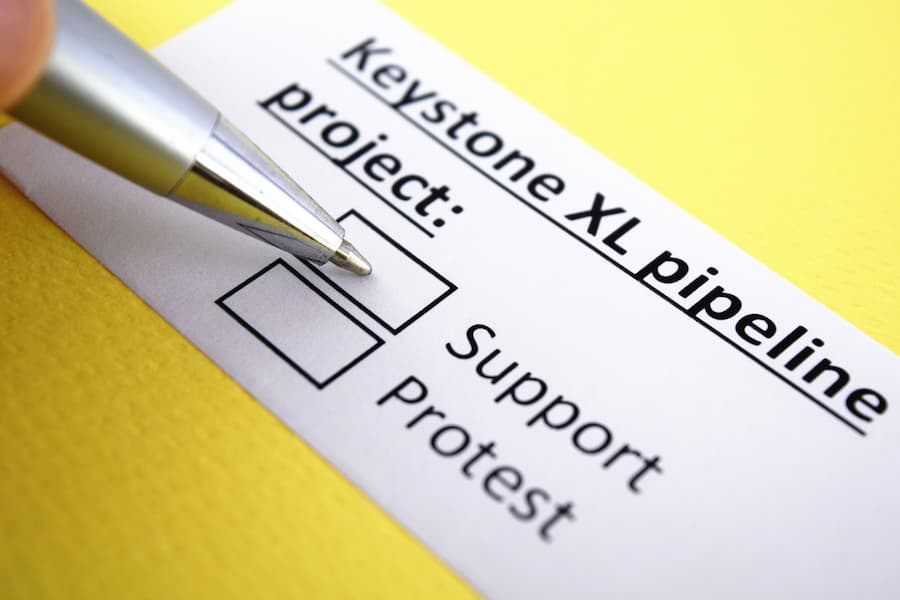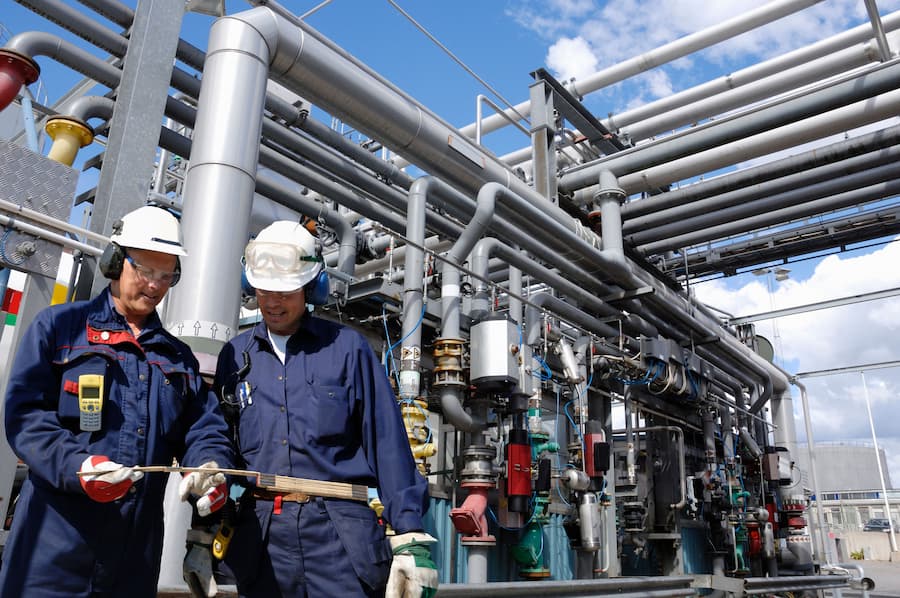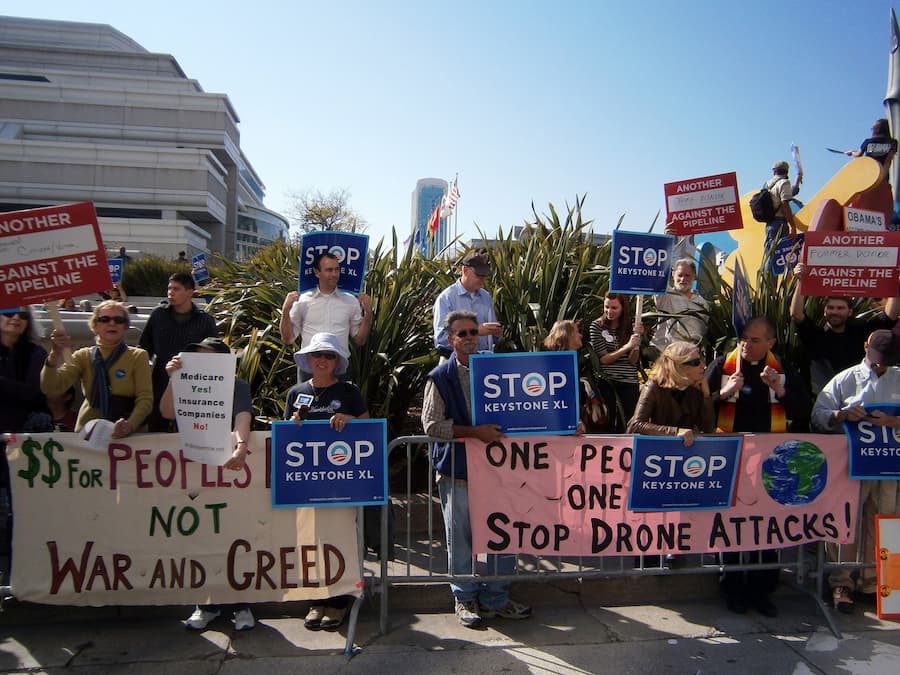The Keystone XL Pipeline - Important History
The Keystone XL Pipeline was a proposed crude oil pipeline project intended to transport oil from Canada to the United States.
This pipeline has made a lot of headlines over the years and has created a lot of controversy.
The Keystone XL pipeline has been a highly contentious project that aims to transport crude oil from the tar sands of Alberta, Canada, to refineries in the United States, extending to Steele City, Nebraska. Proponents argue that it would enhance North American energy security, create jobs, and support economic growth. However, the project has faced significant opposition due to environmental concerns. Critics highlight the potential for oil spills, the destruction of ecosystems, and the contribution to greenhouse gas emissions by promoting the extraction and use of tar sands oil, which is one of the most carbon-intensive forms of fossil fuel. The pipeline has also been a flashpoint for broader debates about climate change policy, indigenous rights, and sustainable energy practices. After years of legal and political battles, President Joe Biden revoked the pipeline's permit in January 2021, citing climate change concerns, effectively halting the project's development.
Here's a brief history of the project and the actions taken by the George W. Bush, Obama, Trump, and Biden administrations:
Proposal and Early History of Keystone XL Pipeline
- The Keystone XL Pipeline was first proposed in 2005 by TransCanada (now TC Energy) as an extension of the existing Keystone Pipeline system.
- The project aimed to transport crude oil from the oil sands in Alberta, Canada, to refineries in the Gulf Coast of the United States.
- The pipeline's proposed route crossed several states, including Montana, South Dakota, Nebraska, Kansas, and Oklahoma.
- The initial proposal faced regulatory reviews, environmental assessments, and public hearings.
Bush Administration
- During the Bush administration, the initial phases of the Keystone XL Pipeline were reviewed and approved.
- In 2008, TransCanada applied for a permit from the U.S. Department of State to build and operate the pipeline.
- The State Department, responsible for reviewing cross-border pipelines, conducted an environmental review and issued a draft Environmental Impact Statement (EIS) in 2010.
- The EIS concluded that the project would have limited environmental impact, but it attracted criticism from environmentalists and affected communities.
- In January 2009, prior to the completion of the EIS, President George W. Bush's administration issued a presidential permit for the construction of the initial Keystone Pipeline, which connected oil sands in Alberta to refineries in the Midwest United States.
- The approval and construction of the initial Keystone Pipeline under the Bush administration were separate from the subsequent Keystone XL Pipeline project.
Obama Administration
- During the Obama administration, the Keystone XL Pipeline became a subject of intense debate and controversy.
- In 2010, the State Department, responsible for reviewing cross-border pipelines, issued a positive environmental assessment of the project.
- However, concerns were raised by environmentalists and affected communities regarding the potential environmental impacts, particularly on carbon emissions and water resources.
- In 2015, President Obama vetoed a bill passed by Congress that would have authorized the construction of the pipeline.
- The Obama administration raised concerns about the pipeline's impact on climate change and emphasized the need for a thorough environmental review.
Trump Administration
- In 2017, shortly after taking office, President Donald Trump issued a presidential memorandum inviting TransCanada to reapply for the Keystone XL Pipeline permit.
- In March 2017, the State Department granted a permit for the construction of the pipeline, overturning the previous decision made under the Obama administration.
- However, legal challenges and opposition from environmental groups delayed the project's progress.
- Construction began in 2020 after legal issues were resolved and the Trump administration provided support for the project.
Biden Administration
- On January 20 2021, President Joe Biden revoked the presidential permit for the Keystone XL Pipeline on his first day in office as part of a broader executive order addressing climate change.
- The Biden administration cited concerns about climate impacts and the project's inconsistency with the administration's environmental and climate goals.
- Revoking the permit effectively halted the construction of the pipeline.
- The decision faced criticism from those who believed the project could create jobs and enhance energy security but was applauded by environmental activists.
Latest Updates?
On June 9, 2021, the Keystone XL project was abandoned by its developer TC Energy. At the time of the project's cancellation, only about 8% of the pipeline had been constructed.
This is an example of how activism by environmentalists over many years can have an impact. Although proponents of the pipeline claim it will create jobs, the reality is that many more jobs can be created by renewable energy. Also, if the pipeline were constructed there would have only been a small number of permanent jobs to operate it.
Renewable energy projects have the potential to create long-term employment opportunities in manufacturing, installation, operations, and maintenance.
The reality is that transitioning to renewable sources could generate more sustainable and long-lasting job growth compared to fossil fuel projects.
As mentioned in the beginning, this pipeline was meant to transport oil from the oil sands of Alberta, also known as the Tar Sands in Alberta.
ChatGPT was used to help create this article
Further Reading and Sources
Join the Community and Newsletter (5000 Subscribers)
You can subscribe to my Substack Page or see the archives of previous posts. More great content coming soon!
Go Solar!
If you live in the United States and want to go solar, now is your chance! Visit Powur
Also, more importantly, you could become an ambassador for Powur and earn $1000 per successful referral. This is a fantastic opportunity to help the environment by helping your bottom line.
You even have the opportunity to become a solar professional, which takes it a step further. Do this if you want to really work in the solar industry. After going through a training, you can earn on average between $2000 to $4000 USD per panel installed. You don't have to be an American to be a solar professional for Powur, but it makes it a lot easier.
Recent Articles
-
Climate Change Quotes by Scientists Around the World
Aug 24, 24 02:01 PM
Explore impactful climate change quotes by scientists. Discover the wisdom and insights of experts advocating for a sustainable future. -
The Blueprint for a Smart and More Sustainable Home
Aug 21, 24 09:57 AM
These days, the concept of “home” has evolved to encompass more than just a physical space, reflecting one’s values, as well. As concerns over environmental -
Green Steps: Practical Measures for Overcoming Climate Change Anxiety
Aug 01, 24 12:46 PM
Climate anxiety affects many people today, and taking definitive action can soothe these concerns while positively impacting the world. By educating yourself -
8 Steps to Launching a Green Building Business
Jul 10, 24 09:13 PM
Have you been thinking about starting your own green building business? If so, you’ve come to the right place. In this blog post, we’ll go over everything
Powur - Solar Power at your Fingertips
Earn $1000 per referral by becoming an ambassador for Powur, a great solar power company in the United States.
If you become an ambassador for solar power, you have three incredible incentives:
- Help yourself by earning $1000 each time you successfully refer someone to solar
- Help create a better world for the next generation
- Help fund the Climate Change Guide, which will continue to spread awareness about climate change. We have been spreading awareness since 2011 to millions of people from nearly 200 countries.
Moreover, you can become a solar professional like me by joining Powur. Take your Powur back!








